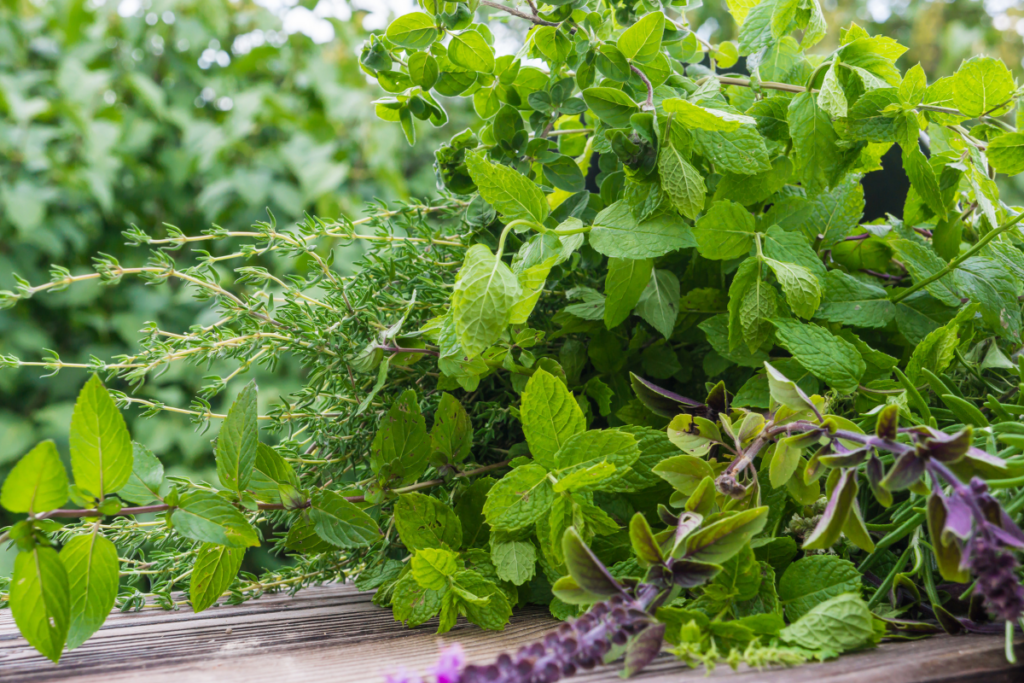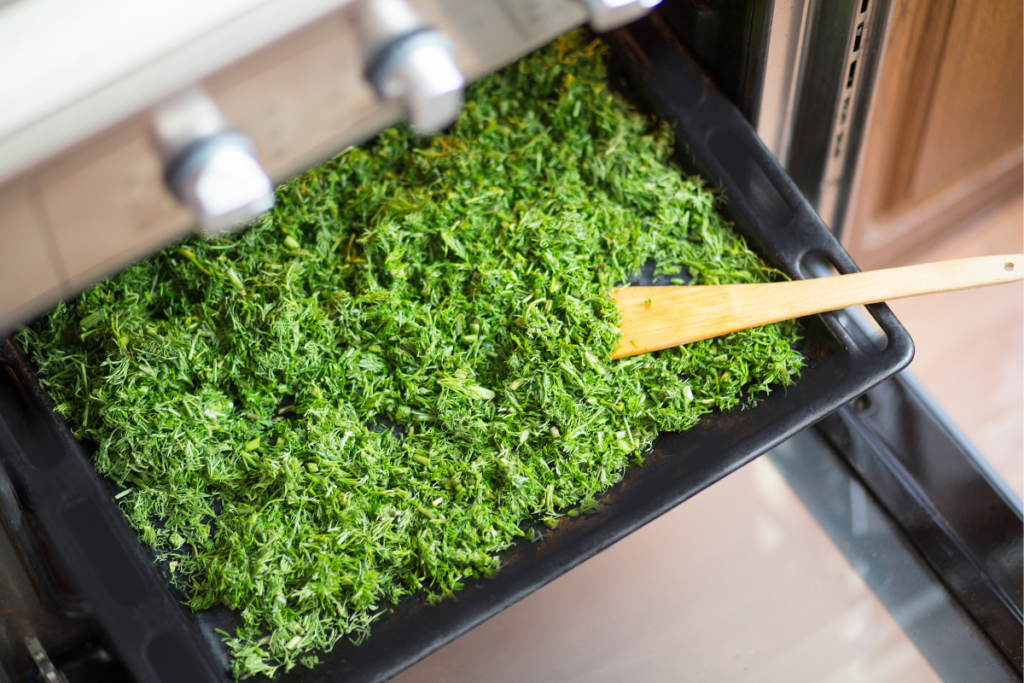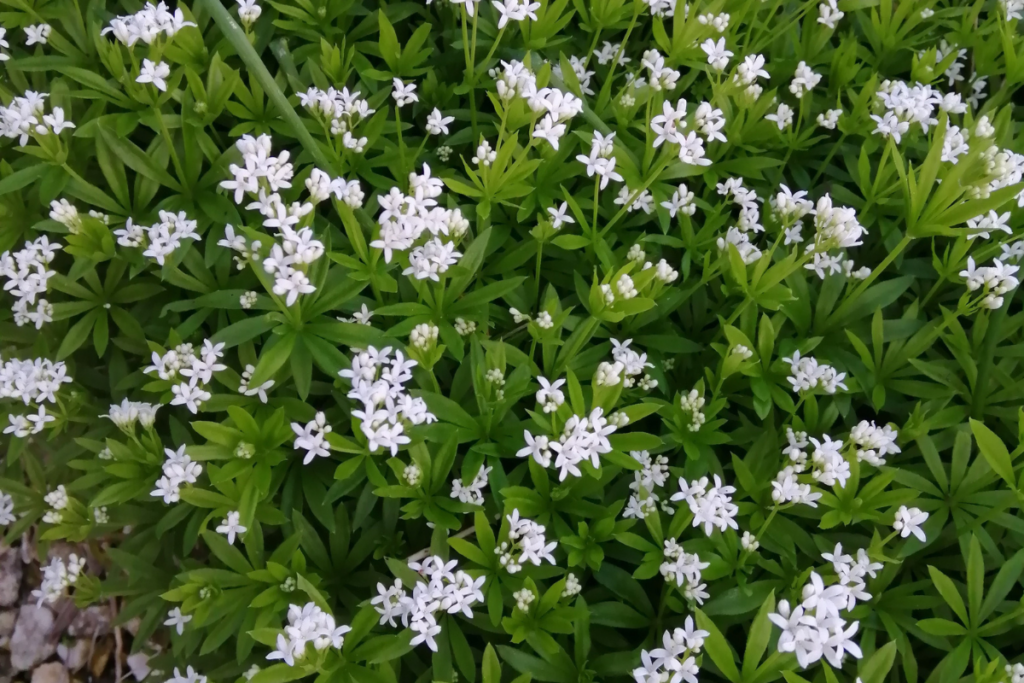Andrew Oldham explains how to safely select and save herbs for handy later home use
There are many herbs that a gardener can successfully dry. My favourites that grow well in my garden, and in pots, include marjoram, golden oregano, thyme, rosemary and garden mint.
Though the last one in that list is thought to be quintessentially British, thanks probably to the popular mint sauce addition with lamb, it is one of the best-travelled herbs in the world and can be found on nearly every continent across the globe. Its myriad varieties, tastes and global uses are indeed mind-boggling. I myself only grow a mere handful, including Moroccan, spearmint and common garden mint.
Herbs are the great survivalists of the plant world. They and they are found in every type of garden and every conceivable place in the wild where flora survives. Drying them can often be confusing but there are some easy rules to follow.
Always pick herbs before they flower

This helps ensure a better quality of home-saved, flavoursome leaf.
Although herb flowers, like chives, are edible, they do not last in the larder like the foliage. It is the wrong time of year for chive flowers but next spring, I recommend picking them and placing them in a jar with white wine vinegar for a few weeks and watching the magic as the clear liquid turns purple and the vinegar becomes a welcome addition to summer salads.
At this time of year, those of us with a herb garden (whether in pots on the windowsill, containers outdoors or in a corner of the garden) may be seeing a second flush of growth coming through after cutting them back in late summer. This pruning removes the flowers and jolts the plant into producing a second lovely harvest which is great for drying.
A morning pick is best
Cut the fresh green growth early in the day with a cup of something reviving in one hand and your secateurs in the other. As the dew evaporates with the morning sunshine, snip away and capture those essential oils at their best. Bag them up immediately if you are going to dehydrate or freeze, or tie them in bunches with string somewhere dry.
Two ways of drying
The main rule is to know what you are picking, so if you are new to the herb garden make sure you label your plants. Not all plants are edible, and some plants can easily be confused with herbs. There have been sad incidents where gardeners have confused yew with rosemary, leading to their tragic demise. Then there have been many incidents where lily of the valley has been confused with garlic chives. This is why it is always important to pick what you know and that is why growing herbs in pots can be the safest way to grown for less easily identifiable varieties.

Bunch drying
For a few hours I hang tied bunches of oregano in the greenhouse, which gives time for any hitchhiking bugs to move on. I then move them into a north-facing room, as direct sunlight will burn away all those essential oils and leave you with crispy, inedible, bonfire scrapings. My kitchen is north-facing, so I hang them up there, from various kitchen cupboard handles. It’s then a matter of patience, as over a few weeks the herbs will dry naturally and will quickly go from their green, lush, pliable state to something more solid, crispy, and flaky to the touch.
It is at this point that I spend the afternoon picking off the leaves and putting them into airtight containers. I find that old jam jars work the best and I write their contents on the glass side. This process can be laborious for some, and there is nothing stopping you from leaving bunches of herbs hanging around your kitchen and cackling like a fairytale witch each time you pull some off to throw in your cauldron, sorry, I mean pan. However, this technique has its drawbacks as bunches of dried mint can look suspiciously like bunches of dried oregano, and the less said about the disastrous spaghetti bolognese I made after confusing the two, the better.


The low oven drying technique
I prefer this way of drying herbs as it’s a lot quicker and better enables me to make my own herb mixes. All that is needed is an oven set to low and a baking tray to hold the freshly picked thyme, rosemary, oregano and marjoram. Place it in the (low as it will go) oven until the herbs are crisp to the touch. What always amazes me is that the herbs quickly dehydrate and within a couple of hours I am standing at a herb scented blender, blitzing away my third or fourth herb mix which I jar up and put in a larder. Unlike the bunches of herbs, this lasts a long time, whereas bunches can rot when bunch hing due to the humidity in kitchens.
Mint is a good gateway drying herb, and can be treated both ways, hung up to dry or cooked slowly in a low oven.
Then there are herbs that revel in being dried in your house to add a hint of hygiene. Sweet Woodruff, also used to make a wine in Germany, has been used by many for centuries to ward off apparent evil and clothes moths. There is a fine line between the ludicrous and the rational in the world of herbs, but Sweet Woodruff, is one of those bunches you can hang around the house to protect your clothes, without harming the flying would-be wool munches.

BIO
Andrew Oldham is a self-sufficient(ish) gardener who believes in the joy of down-to-earth growing and cooking. He lives high on the Saddleworth hills with his family at Pig Row. Find him on all social media platforms as @lifeonpigrow
Find more tips, advice and articles like this at the Amateur Gardening website. Subscribe to Amateur Gardening magazine now



